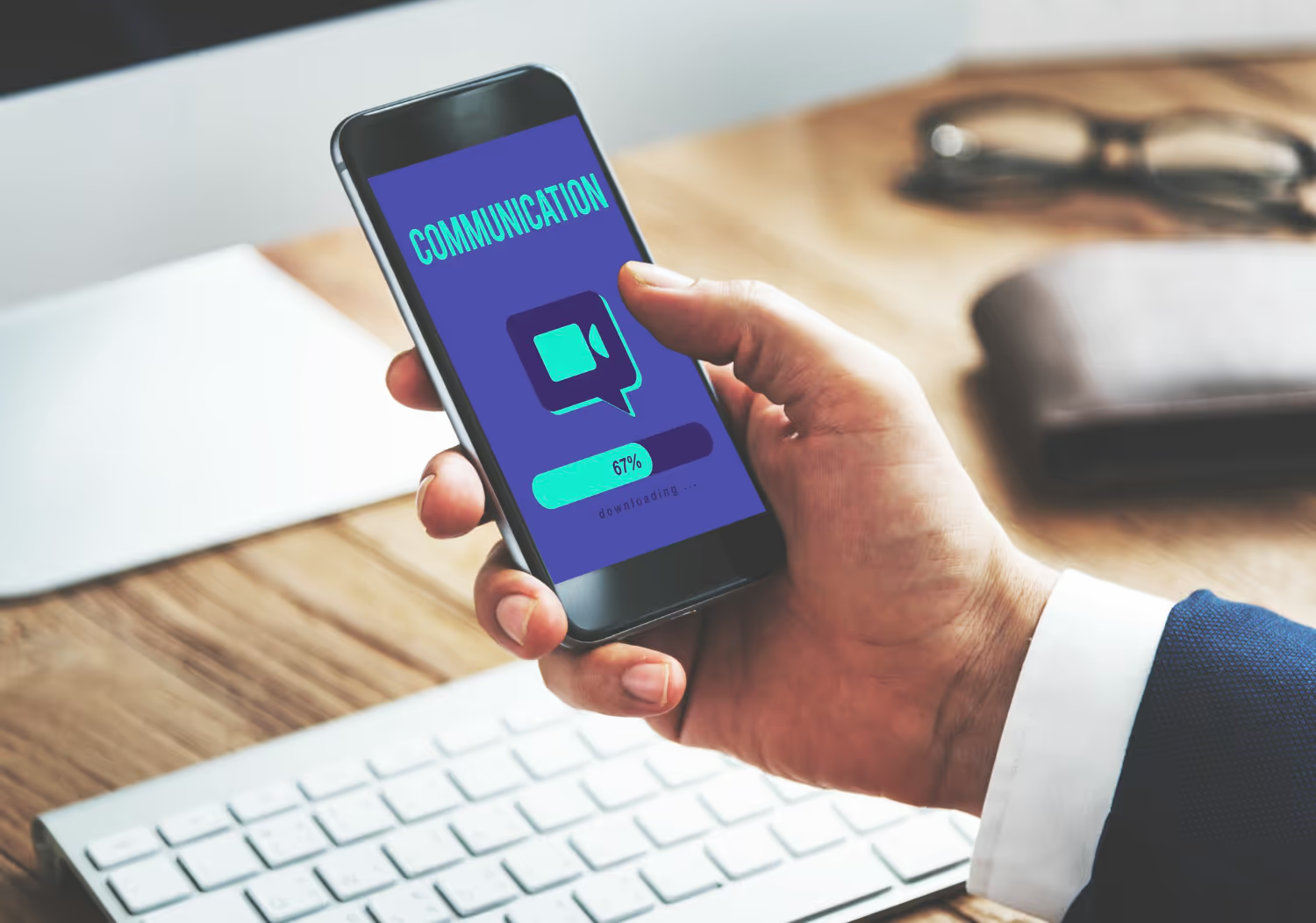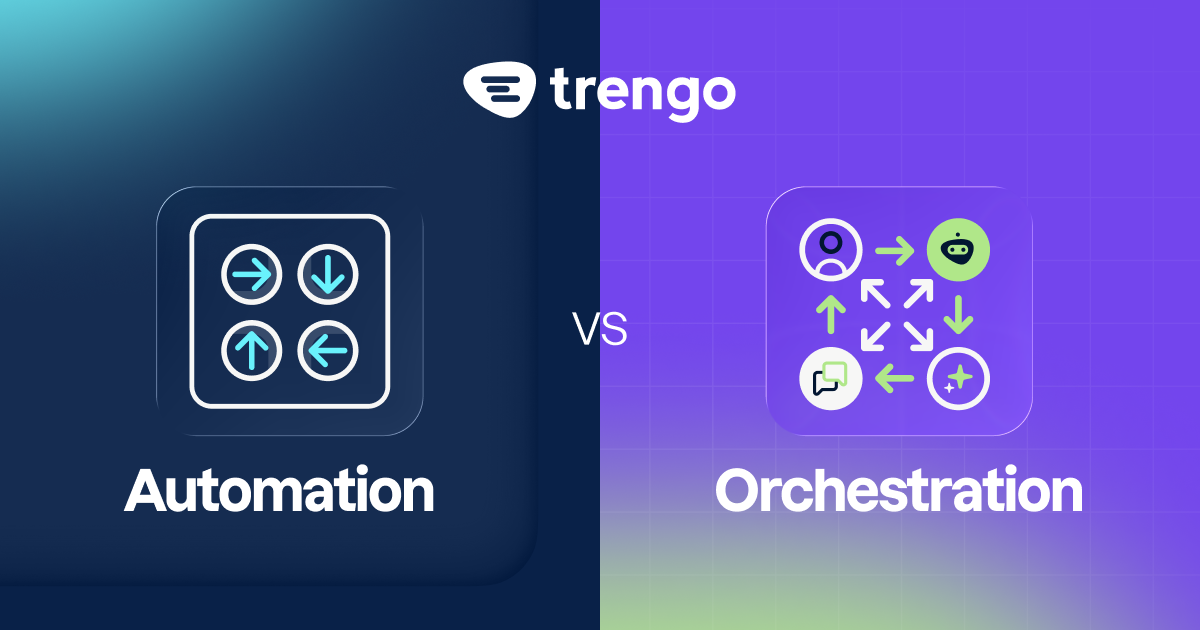In 2026, chatbots have become a familiar presence in our digital lives, whether you’re asking a quick question on a website or getting support through your favourite messaging app. These intelligent programs are designed to simulate human conversation, allowing businesses to offer instant, around-the-clock assistance without missing a beat.
So, what is a chatbot? At its core, it’s software that uses artificial intelligence to understand and respond to people in a natural way, whether you’re typing or speaking. With the rapid evolution of AI, chatbots have grown from simple, rule-based tools into sophisticated assistants capable of handling everything from basic FAQs to complex customer requests.
As more organisations look for ways to improve efficiency and customer satisfaction, chatbots are playing a central role in transforming service experiences. In this article, we’ll explore how chatbots work, their impact on customer service, and what business leaders need to know to harness their full potential in 2026.
What is a chatbot definition?
A chatbot is a computer program or software application designed to simulate human conversation, either through text or voice interactions. When people ask, what is a chatbot definition?, the answer is straightforward: it’s a digital tool that allows users to communicate with devices or services as if they were speaking with a real person.
Chatbots can be simple or highly advanced. At the basic level, some chatbots follow set scripts to answer common questions, like telling you store hours or helping you reset a password. More advanced chatbots use artificial intelligence (AI), machine learning, and natural language processing to understand context, interpret intent, and provide more personalised responses over time.
You’ve likely encountered a chatbot in everyday situations. For example, a pop-up on a website offering help, a virtual assistant on your phone, or a messaging app that lets you check your bank balance or track a delivery. Some chatbots even use voice technology, enabling hands-free interactions for tasks like booking a ride or ordering coffee.
In short, chatbots are now an essential part of how businesses connect with customers, making it easier to get information, solve problems, and complete tasks—any time, anywhere.
Types of chatbots
It’s important to understand that not all chatbots are the same. In 2026, chatbots will come in several forms, each with unique capabilities and use cases. The main types include:
- Rule-based chatbots
These are the simplest chatbots, operating on preset rules and scripts. They follow a decision tree or menu structure, matching user inputs to predefined responses. Rule-based chatbots are ideal for answering straightforward questions, handling routine tasks, or guiding users through simple processes. For example, they’re often used for FAQs, order tracking, or booking appointments. - AI-powered chatbots
AI-powered chatbots use artificial intelligence and natural language processing (NLP) to understand and respond to user queries more flexibly. They can interpret context, learn from interactions, and provide more personalised, dynamic responses. These chatbots can handle a broader range of topics and adapt to new questions, making them suitable for more complex customer service scenarios. - Voice chatbots
Voice chatbots interact with users through spoken language, using speech recognition and synthesis technologies. They enable hands-free conversations on smart devices and are increasingly common in home automation and customer support, allowing users to make requests or get information by simply speaking. - AI agents
AI agents represent the next evolution beyond traditional chatbots. They combine advanced AI, contextual understanding, and autonomous decision-making to resolve complex issues without human intervention. AI agents can access and process information across multiple systems, remember previous interactions, and adapt their responses in real time. This makes them capable of handling multi-step tasks and delivering highly personalised support around the clock.
As customer expectations rise, businesses are moving beyond basic bots to invest in AI-powered chatbots and AI agents. Understanding the different types helps organisations choose the right solution to meet evolving needs and deliver seamless, efficient service.
Chatbots versus AI chatbots versus virtual agents
The question what is a chatbot?is often followed by confusion about how chatbots, AI chatbots, and virtual agents differ. While these terms are closely related, each describes a different level of capability and intelligence in digital conversation tools.
A chatbot is the broadest term, referring to any software that simulates human conversation, whether it’s based on simple rules or more advanced technology. Traditional chatbots typically handle straightforward tasks using predefined scripts or decision trees. They’re ideal for answering FAQs, guiding users through basic processes, or providing quick responses within set boundaries.
AI chatbots take things further by using artificial intelligence, especially natural language processing (NLP) and machine learning. This allows them to interpret user intent, understand context, and generate more natural, dynamic responses. Over time, AI chatbots can learn from interactions, becoming more accurate and helpful. They’re better suited for handling a wider range of questions and adapting to new topics as they arise.
Virtual agents represent the next step in conversational technology. These advanced systems combine conversational AI with real-time data analysis and can integrate deeply with business systems. Virtual agents not only understand and respond to complex queries but can also take action, such as processing refunds, updating orders, or booking appointments, without human intervention. They continuously learn and adapt, offering highly personalised, context-aware support that feels much closer to interacting with a human expert.
To illustrate the difference:
- A traditional chatbot might provide a scripted answer to a question about store hours.
- An AI chatbot could understand a more casually phrased question and respond accurately, even if the wording is new.
- A virtual agent could answer the same question, check your past orders, and offer to reschedule a delivery—all within the same conversation.
Understanding these distinctions helps businesses choose the right solution for their needs, ensuring customers get the right level of support, whether it’s fast answers to simple questions or intelligent help with more complex tasks.
How does a chatbot work?
When asking how a chatbot works?, It’s helpful to look at the evolution from simple programs to today’s advanced AI-driven systems. Early chatbots were essentially interactive FAQs, using fixed scripts and keyword matching to provide pre-written answers to common questions. These rule-based chatbots could only respond to specific prompts and struggled with anything outside their programmed scenarios.
Modern chatbots, however, use artificial intelligence, natural language processing (NLP), and machine learning to understand and respond to a much wider range of human language. Here’s how the process works:
For rule-based chatbots, the system receives a user message, checks for certain keywords or phrases, and then delivers a scripted response from its database. This approach is fast and reliable for predictable, repetitive queries, but it’s limited in flexibility.
- AI-powered chatbots go further. When a user sends a message, the chatbot breaks down the text into smaller parts (tokenization), identifies the user’s intent, and recognises specific details like names or dates (entity recognition). It then searches its knowledge base or uses semantic analysis to generate a relevant answer. With each interaction, the chatbot learns and improves its responses over time, making conversations feel more natural and personalised.
- The most advanced chatbots—often called virtual agents—combine conversational AI with real-time data and automation. They can understand context, remember past interactions, and even take actions such as booking appointments or processing orders, all without human intervention.
Thanks to ongoing advancements in AI and NLP, chatbots in 2026 are smarter than ever, able to handle complex conversations and provide instant, human-like support across various platforms. Whether built with code or through user-friendly, no-code platforms, chatbots are now accessible for businesses of all sizes to implement quickly and effectively.
Common chatbot use cases in 2026
Chatbots have become essential tools for businesses and consumers alike, offering practical solutions across various industries. When considering “how does a chatbot work?” in real-world settings, it’s clear that their applications are both diverse and impactful.
- Customer service
Chatbots are widely used to provide instant answers to frequently asked questions, troubleshoot common issues, and offer 24/7 support. They can handle order tracking, process returns, and escalate more complex queries to human agents, significantly reducing wait times and improving customer satisfaction.
- Sales and marketing
In sales, chatbots qualify leads, recommend products based on customer preferences, and guide users through the buying journey. They can deliver personalised promotions, collect valuable customer data, and even recover abandoned carts by sending reminders or offering incentives.
- E-commerce
E-commerce platforms rely on chatbots for product recommendations, real-time order tracking, and customer support at any hour. Chatbots also help with promotional notifications and encourage customers to complete purchases, directly impacting conversion rates and sales performance.
- Healthcare
Healthcare chatbots schedule appointments, send medication reminders, provide symptom assessments, and answer basic health questions. They support mental health by offering resources and can even assist with patient data collection and telemedicine consultations.
- Banking and finance
In banking, chatbots allow customers to check balances, receive fraud alerts, get investment advice, and handle account inquiries. They streamline customer support and can guide users through loan pre-qualification or other financial processes.
- Education
Educational chatbots deliver personalised learning content, offer instant feedback, answer questions about coursework, and facilitate communication between students and educators. They act as 24/7 teaching assistants, supporting both learners and staff.
- Hospitality and travel
In hospitality, chatbots manage room bookings, provide local recommendations, handle guest requests, and manage loyalty programmes. For travel, they assist with booking management, itinerary planning, travel updates, and lost luggage assistance.
- Internal operations
Many organisations use chatbots for internal help desks, HR support, and IT troubleshooting, enabling employees to resolve issues or find information quickly without waiting for human assistance.
Chatbots are now integrated across websites, messaging apps, social media, and even voice interfaces, making them accessible wherever users need support. Their ability to automate routine tasks, provide personalised experiences, and operate around the clock is transforming how businesses interact with customers and manage operations in 2026.
Risks and limitations of chatbots
While chatbots offer significant benefits for businesses and customers, they also come with notable risks and limitations that organisations must consider.
- Limited understanding and accuracy
Traditional chatbots, especially those based on rule-based systems, often struggle to resolve complex or unexpected queries. Their responses are limited to what they’ve been programmed or trained on. If a customer asks something outside of this scope, the chatbot may provide an incorrect or unhelpful answer, leading to frustration and the need for human intervention.
- AI hallucinations
Generative AI chatbots can sometimes produce responses that sound convincing but are actually inaccurate or entirely fabricated—a phenomenon known as “AI hallucination.” If the chatbot provides false information about products, policies, or services, it can mislead users, damage trust, and even create legal liability for businesses.
- Security and data privacy risks
Chatbots often handle sensitive information, such as personal details, payment data, or confidential business records. Without robust security measures, there’s a risk of data leakage, cyberattacks, or unauthorised access to user information. Prompt injection attacks, where malicious users manipulate the chatbot’s responses, are an emerging threat that can expose internal data or bypass security protocols.
- Compliance and legal concerns
Handling personal data means chatbots must comply with regulations like GDPR and CCPA. Failing to secure user data or provide transparency about data usage can result in legal penalties and loss of customer trust. Businesses are also responsible for the accuracy of chatbot responses and can be held liable for misinformation or errors.
- Lack of emotional intelligence
Chatbots lack the empathy and nuanced understanding of human agents. They can’t interpret emotions or context as effectively, which may result in unsatisfactory experiences, especially in sensitive or complex situations.
- Technical limitations
Chatbots can face scalability issues, outages, or integration failures with other business systems. These technical challenges can disrupt service and impact customer satisfaction.
In summary, while chatbots are powerful tools, their effectiveness depends on careful platform selection, proper programming, strong security, and ongoing oversight. Addressing these risks is essential for building reliable, trustworthy, and compliant chatbot solutions in 2026.
Building your first chatbot: Steps to create a chatbot
Creating a chatbot has never been easier, especially with no-code platforms like Trengo. Whether you want to automate customer support, generate leads, or guide users through your website, the right approach makes all the difference. Here’s a straightforward guide to getting started and how to build a chatbot in Trengo.
- Define your goals
Start by deciding what your chatbot should achieve. Do you want to answer FAQs, qualify leads, or provide order updates? Clear objectives help you design a chatbot that delivers real value. - Choose the right platform
Select a chatbot platform that fits your needs. Trengo, for example, offers a user-friendly builder that requires no coding and supports multiple channels, from website chat to WhatsApp and Instagram. - Map out the conversation
Design the conversation flow your users will experience. Think about the questions your customers ask most and how the chatbot should respond. Keep the dialogue simple, clear, and focused on helping users reach their goals. - Build and customise
In Trengo, sign up or log in, then access the chatbot builder. Choose the chatbot type—standard for FAQs or flowbot for guided conversations. Customise the bot’s name, introduction, and responses. Set when and where the bot appears, and personalise triggers for engagement. - Test and launch
Preview your chatbot to ensure it works smoothly. Launch it across your chosen channels. Monitor its performance using Trengo’s analytics, and keep optimising based on user feedback. - Dos and don’ts
Do keep conversations simple and transparent. Don’t try to mimic a human too closely—let users know they’re chatting with a bot. Always offer an easy handoff to a human agent when needed.
With Trengo, you can create a powerful chatbot in minutes, helping your business engage customers, automate support, and scale effortlessly—no technical expertise required.
Tips for choosing the right chatbot for your business
Choosing the right chatbot can greatly impact your business and customer experience. Here are key tips to help you make the best choice:
- Define your goals
Know what you want your chatbot to achieve—whether it’s improving customer service, automating tasks, or boosting engagement. Clear goals help you focus on features that matter most. - Match complexity to your needs
For simple, repetitive tasks, a rule-based chatbot may be enough. For more advanced conversations, look for AI-powered chatbots that can learn and adapt. - Ensure easy integration and scalability
Pick a chatbot that connects smoothly with your existing systems and can scale as your business grows. This ensures a seamless workflow and future flexibility. - Prioritise security and compliance
Make sure your chatbot meets industry security standards and complies with regulations like GDPR, especially if handling sensitive data. - Focus on user experience
Choose a solution that reflects your brand’s voice, is easy to use, and can smoothly transfer conversations to human agents when needed. - Review analytics and support
Opt for platforms that provide analytics to track performance and offer reliable support.
By following these tips, you’ll be able to select a chatbot that fits your needs today and can grow with your business in the future.
The future of chatbots: what’s next and how to get started
Chatbots are rapidly evolving, becoming smarter and more capable with every leap in AI technology. As businesses and customers grow more comfortable with digital assistants, chatbots will continue to enhance human productivity, freeing up teams to focus on creative, strategic work instead of repetitive tasks.
Looking ahead, the combination of AI advancements and faster connectivity, like 5G, will unlock even more powerful chatbot features. Imagine instant recommendations, seamless integration with video calls, and highly personalised support—all within a single conversation. These innovations are just around the corner, promising to make daily interactions smoother and more efficient for everyone.
Ready to see what chatbots can do for your business? Try Trengo’s chatbot platform for free. Book a personalised demo or start your free trial today to experience how easy it is to build, launch, and scale your AI-powered chatbot—no coding required. Empower your team and delight your customers with the future of conversational support.




.png)











